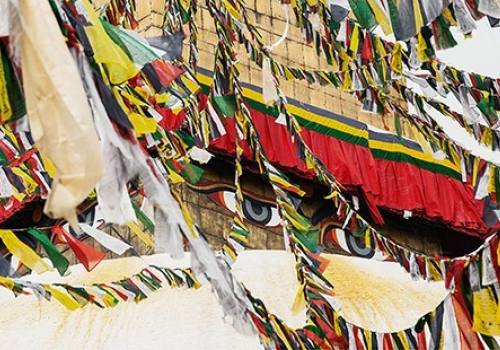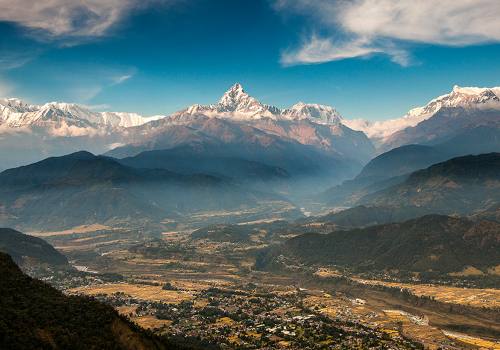Kathmandu Heritage Tour
Detailed Itinerary:
Day 01: Arrival
Meet, Assist and Transfer the guest to the Hotel. Check-in at the Hotel. Rest of the day free to Localize (on own).
Overnight at Kathmandu
Day 02: Bouddhanath and Pashupatinath
After breakfast proceed to visit Bouddhanath and Observe Thanka painting, carpet weaving and visit Monastery to observe monastic life. Later visit Pashupatinath
Boudhanath:
Boudhanath is widely considered the largest Buddhist stupa in the world, boasting a base diameter of 82 meters. It holds many legends, including the story of King Manadev, who constructed it in the 5th century as a form of penance. Although it lay forgotten for centuries, it was rediscovered in the 15th century and gradually gained popularity among Tibetan Buddhists. Today, over 50 monasteries surround Boudhanath, which is one of the seven Monument Zones comprising the Kathmandu Valley World Heritage Sites. Be sure to visit the Thanka painting and carpet weaving center while you're there.
Pashupatinath Temple:
Situated on the northeastern side of Kathmandu, along the western banks of the Bagmati River, Pashupatinath Temple is a significant Hindu pilgrimage site. It is considered one of the most important in the world and was the primary protector deity of Nepal when the country was officially a Hindu Kingdom. According to legend, a cow herder discovered the temple after seeing one of his cows empty its milk at the spot where it now stands. The inner sanctum of the temple houses a lingam, a stone phallus with four faces around it. Pashupatinath, one of the many forms of Lord Shiva, draws Hindu pilgrims from all over the world, especially during MahaShivaratri, the "Night of Shiva," which occurs in early spring. The temple and its surrounding complex are also UNESCO World Heritage Sites, and visitors can explore a pantheon of other temples, including KiratesworeMahadev, Bhairav, Guheswori, and Gorakhnath, each with their own origin and significance.
Overnight at Kathmandu
Day 03: Patan, Bungmati and Khokana
After enjoying breakfast at the hotel, embark on a sightseeing tour of Patan, Patan Industrial State, Bungamati, and Khokana.
Patan, located on the southern banks of the Bagmati River, is one of the three main cities in the Kathmandu Valley and is believed to be the first settlement in the Valley. The city boasts an impressive collection of elaborately carved temples, palace courtyards, water spouts, public baths, and houses adorned with intricate wood, stone, and metal carvings under the patronage of the Kirat, Lichivi, and Malla kings. With over 1,000 temples and monuments dedicated to a unique blend of Buddhist and Hindu gods, Patan Durbar Square is one of the seven Monument Zones that make up the Kathmandu Valley UNESCO World Heritage Site.
Bungamati and Khokana are two quaint villages that have remained untouched by modernization. The locals lead a simple life, occupying themselves mainly with agriculture. Bungamati is famous for its elaborate carving designs in stones and wood, which have been passed down from generation to generation. The village is also home to several craft workshops and showrooms. Khokana, on the other hand, is renowned for the Karyabinayak temple, dedicated to the Hindu god Ganesha. It is considered a sacred site where people from all over come to seek blessings before auspicious events. Similar to Bungamati, Khokana also has numerous workshops showcasing intricate stone and wood carvings.
Overnight at Kathmandu
Day 04: Bhaktapur
Breakfast at the hotel, followed by a visit to Bhaktapur Durbar Square and Pottery Square.
Enjoy lunch with a local family in Bhaktapur.
Bhaktapur is a medieval city located east of Kathmandu, known for its ancient traditions and customs. It is home to some of the best examples of Nepali craftsmanship, such as the Palace of 55 Windows, Nyatapola Temple, KashiBiswanath Temple, and Dattatreya Temple. Witness the local potters using age-old techniques to make clay utensils in Pottery Square. Overnight stay in Bhaktapur.
Day 5: After breakfast, hike approximately 6km to Changunarayan Temple, the oldest temple in the history of Nepal. The temple, dedicated to Lord Visnu, is located on a high hilltop surrounded by a champak tree forest and a small village known as Changu. It is located in Changunarayan VDC of Bhaktapur District, a few miles north of Bhaktapur and about 7 miles or 12 km east of Kathmandu, with the Manahara River flowing beside the hill. The temple is held in special reverence by the Hindu people and is named after Champak, the daughter of the Kashmiri king, who was given in marriage to the prince of Bhaktapur. After visiting the temple, continue to Telkot and Nagarkot
Later continue hiking from Changu to Telkot which will take around 2-2.5 hrs (10km approx.)
Pickup from Telkot to Nagarkot OR Hike from Telkot to Nagarkot which will take around 4-4.5 hrs walking.
Overnight in Nagarkot
Day 06: Kathmandu Sightseeing - Visit Living Goddess Kumari, Kathmandu City and Swayambhunath Stupa
Start the day with a stunning sunrise view from Nagarkot, followed by breakfast and a drive back to Kathmandu. In Kathmandu City, visit the temple of the Living Goddess Kumari, who acknowledges the greetings of devotees from the balcony of her temple residence. Also visit Kasthamandap, the source of the name Kathmandu, and Durbar Square with its array of temples overlooked by the Hanuman Dhoka Palace.
Next, head to Swayambhunath Stupa, one of the most important religious and cultural sites in Nepal. Perched on a hilltop on the southwestern part of Kathmandu, Swayambhunath is associated with the birth of the Kathmandu Valley civilization and is approximately 2000 years old. The stupa is a dome 20 meters in diameter and 32 meters high and is made of brick and earth mounted by a conical spire capped by a pinnacle of copper gilt. Many other smaller temples and places of religious importance for both Hindus and Buddhists surround it.
After the sightseeing, enjoy a Nepali dinner with a cultural dance show before returning to your hotel in Kathmandu for the night.
Day 07: Departure - Breakfast at the Hotel and Transfer to International Airport
Enjoy breakfast at your hotel before being transferred to the international airport to connect your flight. Thank you for choosing us for your Kathmandu experience
-
DestinationBhutan
Need Help?
Please feel free to contact us. We will get back to you with 1-2 business days. Or just call us now
+977 9851129119 (Laxman)+977 9851071277 (Anjan)
+977 9841311424 (Sudip) info@yetiescape.com.np










